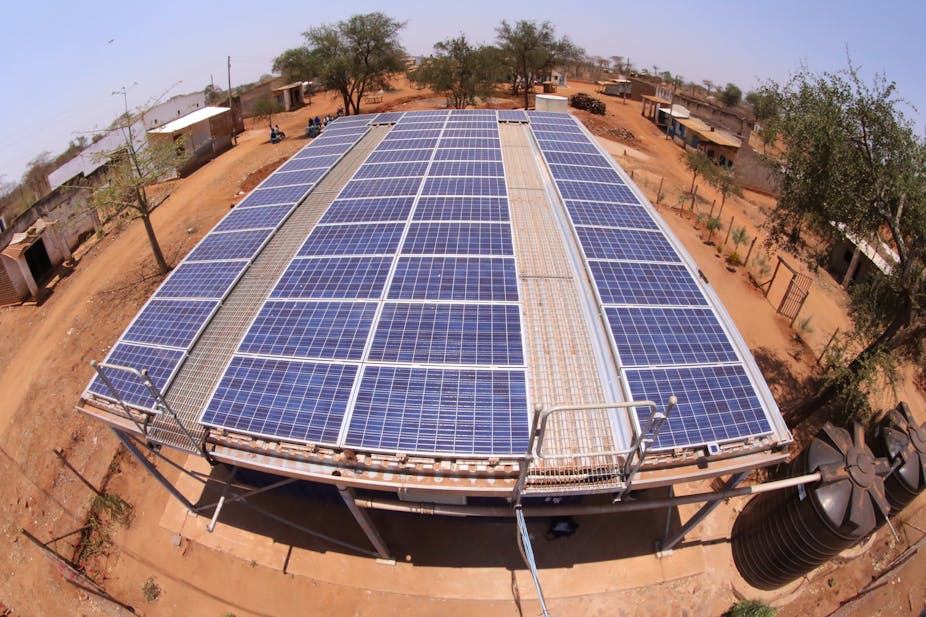It is estimated that around one and a half billion people globally have no access to reliable electricity. Most live in developing countries where the cost of connecting rural villages to the electricity grid is, and will remain, prohibitively expensive.
This is certainly the case in sub-Saharan Africa, where remote villages lie in huge expanses of territory, far from electrified towns and cities. The 48 countries in Sub-Saharan Africa, comprising 800m people, generate power roughly equivalent to Spain, with a population of 45m. And, incredibly, this figure is falling. Building infrastructure in Africa is a major challenge, and electrifying the continent is perhaps the biggest of all.
This challenge was the target of the our Energy for Development (E4D) programme. The aim is to set up and implement easy-to-replicate, sustainable, decentralised, off-grid electricity generation for rural communities, which requires overcoming various scientific, engineering, and policy questions challenges.
A key aim was not just to electrify but to invigorate rural communities and village centres by providing a means to support self-governance, finance and entrepreneurship. The Kitonyoni village market solar project established in Makueni County, southeast Kenya, involved setting up a community-based, energy supply co-operative. This would operate an electricity mini-grid to distribute solar powered electricity. The mini-grid was designed to supply power to all buildings in the village centre, including shops, cafes, schools, health centres, and churches.
To ensure the project is economically sustainable, the village community contributes to the co-operative and is responsible for running and maintaining the 13.5kW power plant. Income is generated by co-op membership fees, electricity sales and share ownership, and this covers all the running and maintenance costs. Surplus is also used to provide micro finance for the community, which helps to earn back the project’s initial capital cost.

Obviously the constant supply of strong sunlight throughout the continent makes solar power ideal to tackle Africa’s power shortfall. But solar power appears most commonly as very small scale systems such as for individual household lighting or water pumping. Large scale projects are emerging however, for exmample the 250kW system in Kigali, Rwanda, and a 1MW plant due to open in December in Kericho County, Kenya, which will be the largest in East Africa.
Energy policy in African states is variable, and suffers from lack of long term investment. Of the US$269 billion invested in renewable energy projects worldwide, only US$4.5 billion was in Africa. The new Kenyan energy policy issued last year, for example, outlines targets for renewable energy. But regardless, the high initial costs of equipment and lack of expertise has led solar power to be sidelined, national grids expanded to connect urban areas, and rural settlements overlooked. This is why one of the key aims of the E4D project was to design a modular system that could be easily delivered and customised to suit different villages, and one that would be viable through electricity charges and membership fees within the community, with no expectation of support from government.
An estimated 3,000 local people will benefit from electricity provided in Kitonyoni. The school, health centre, and the 40 businesses in the village centre have stable, round-the-clock power supply, which allows them to open longer and provide extra services, such as IT training, tailoring and hair dressing that require electrical equipment. The canopy of the solar power system also collects rain, and the water is stored and sold by the cooperative year round.
The project has undoubtedly transformed the village centre, the villagers’ lives, and has also provided the research team with a year’s data to better gauge the system’s performance. In a year, land prices have more than doubled, five new buildings have been completed, new businesses started, business income has (in most cases) more than doubled and, most importantly, a new maternity ward has been been electrified.
The challenge now is to reduce capital costs and streamline the process of replicating the project elsewhere. A second project in Kenya and one in Cameroon are underway, with others planned in Mozambique and elsewhere in Africa. Visitors have come from as far afield as the UK, Japan, Germany, Zambia, and from institutions such as the the World Bank and the private sector.
In most developing countries the cost of connecting the national grid to remote regions is too expensive. For rural areas, self-generation is the only viable option, with renewable off-grid solutions in most cases able to provide cheaper options with no fuel cost and low maintenance.

